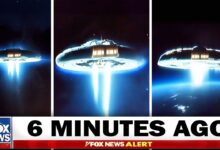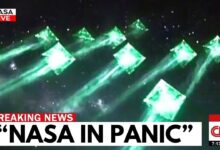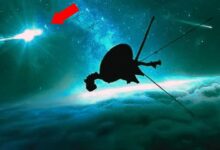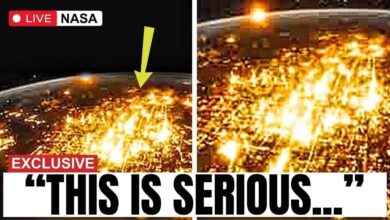Hubble Has Been Seeing Something It Was Never Meant to See For The Last 34 Years
Hubble’s Remarkable Journey Through Our Solar System
Hubble has been in space for over 34 years, and its mission has been an incredible success. Although it wasn’t originally designed to observe objects within our solar system, it has done so throughout its journey, capturing extraordinary moments that would have otherwise gone unnoticed. Not every planet has a dedicated mission, and there’s much more to explore beyond just the planets. Let’s embark on a journey through our cosmic neighborhood, venturing from Earth to the farthest reaches of the solar system, discovering remarkable objects that Hubble’s keen eye has revealed.
The Moon: A Reflection of Venus
We begin close to home, with our immediate neighbor, the Moon. Due to the Moon’s large apparent size in our sky, Hubble cannot capture its entire surface in a single image. Additionally, other missions, like NASA’s Lunar Reconnaissance Orbiter, provide far better images. Therefore, Hubble’s time is better utilized elsewhere. However, in 2012, Hubble captured an intriguing image during a special event: Venus passing in front of the Sun. Scientists used the Moon as a massive mirror to detect subtle variations caused by sunlight scattering through Venus’s atmosphere. This method helped study Venus’s atmospheric composition, testing whether the light-scattering method could provide accurate results. Hubble frequently applies this technique to study exoplanet atmospheres as they pass in front of distant stars.
Mars: A Detailed View of Dust Storms and Moons
Hubble often observes Mars, providing a full view of the planet that orbiting spacecraft cannot always achieve. These observations give valuable insights into dust storms, seasonal changes, and other weather phenomena on Mars. For example, a time-lapse shows a global dust storm that enveloped the planet, obscuring surface features. Mars’s moons, Phobos and Deimos, are also visible in the background, moving rapidly across the planet’s sky. Phobos, the larger and closer of the two moons, orbits Mars faster than the planet’s day, completing a full orbit every 7.5 hours. This makes it the fastest orbiting moon in the solar system.
The Asteroid Belt: Mysterious Objects and Collisions
As we leave the inner planets and approach the first gas giants, we pass through the asteroid belt. Among the objects in this fascinating region is asteroid 64,478 GT, which resembles a comet with twin tails. This asteroid, located in the asteroid belt, was imaged in 2019. Scientists believe the Yarkovsky Effect, caused by solar radiation, is responsible for the asteroid’s rapid rotation, leading to centrifugal forces strong enough to eject material into space, forming the tails. Over time, GT will likely disintegrate completely, much like other asteroids and comets.
In another part of the asteroid belt, we observe P/2010 A2, a fascinating collision between two asteroids. The debris from the impact forms an unusual X-shaped structure. This event is a rare occurrence and provides insight into the dynamic nature of the asteroid belt.
Jupiter: The Solar System’s Vacuum Cleaner
Jupiter, often called the solar system’s “vacuum cleaner,” has a gravitational influence that shapes the fate of nearby objects. One example is the 1994 impact of Comet Shoemaker-Levy 9, which ventured too close to Jupiter and was torn apart by the planet’s gravity. The fragments collided with Jupiter at incredible speeds, releasing massive amounts of energy, equivalent to over 600 times the power of the world’s combined nuclear arsenal. Jupiter’s immense gravity also shields the inner solar system from potential catastrophic collisions.
Jupiter’s auroras, generated by its powerful magnetic field and intense radiation, are another captivating feature. Hubble’s ultraviolet capabilities have allowed astronomers to study these auroras in detail, revealing that they are hundreds of times more intense than Earth’s auroras and are continuous, unlike Earth’s, which appear sporadically during solar storms.
Europa: A Potentially Habitable Moon
One of Jupiter’s moons, Europa, is considered one of the best candidates for extraterrestrial life in our solar system. Beneath its icy surface, scientists theorize that Europa may have a subsurface ocean of liquid water, kept warm by tidal forces from Jupiter’s gravity. Hubble has detected what appears to be plumes of water vapor erupting from Europa’s surface, supporting the hypothesis of a liquid ocean beneath. In addition, Hubble has confirmed the presence of salts on Europa’s surface, which likely originated from this subsurface ocean and were ejected during volcanic activity.
Saturn: A Gas Giant’s Beauty and Mysteries
After the Cassini mission ended in 2017, Saturn was left without a dedicated spacecraft. Hubble, however, continues to observe Saturn, monitoring atmospheric changes, weather phenomena, and seasonal variations. Among its most striking observations are massive storms stretching across Saturn’s surface. Hubble also captures breathtaking images of Saturn and its rings, showcasing the beauty of the gas giant.
Uranus: A Unique Tilt and Seasonal Changes
Uranus is another intriguing gas giant in our solar system. Its magnetic poles do not align with its rotational axis, and its dramatic tilt causes it to roll along its orbit. Hubble has captured detailed images of Uranus’s atmospheric bands and seasonal changes. These observations revealed that the planet experiences cloud caps near its poles during the summer season, which dissipate as Uranus moves toward its equinox.
Neptune: A Tiny Moon and Transient Storms
Neptune, the outermost ice giant, has been largely overlooked by space missions, with only a single close encounter from Voyager 2 in 1989. However, Hubble has provided valuable insights into Neptune’s atmosphere and weather patterns. Hubble discovered a new moon, Hippocamp, orbiting Neptune in 2013. This small moon is believed to be a fragment of Neptune’s larger moon, Proteus, likely created by a massive impact. Hubble also tracks Neptune’s giant storms, including the Great Dark Spot, a storm similar to Jupiter’s Great Red Spot, which has since disappeared. Neptune’s storms are transient, lasting only a few years, but Hubble’s ultraviolet observations have been crucial in tracking these changes.
Gonggong: A Fascinating Dwarf Planet
As we conclude our tour, let’s take a look at the dwarf planet Gonggong, located in the Kuiper Belt. While Hubble didn’t discover Gonggong, it played a key role in identifying its moon, which had previously been missed in earlier images. Gonggong’s slow rotation, taking 45 hours to complete a spin, suggested the presence of a moon, which was confirmed through Hubble’s observations. This discovery provides important data to refine models of solar system formation, as nearly all known dwarf planets in the Kuiper Belt have moons.
Hubble’s Legacy
Reflecting on these discoveries, it’s clear that Hubble has been instrumental in expanding humanity’s understanding of our solar system. Over the past 34 years, Hubble has provided insights and images that continue to fuel scientific discovery. While its mission may one day come to an end, with proper care, it could continue operating until 2040, potentially outliving the James Webb Space Telescope. Until then, Hubble will remain a crucial tool in exploring the wonders of space.
If you enjoyed this journey through our solar system, don’t forget to like, share, and subscribe for more cosmic content. And as always, keep looking up—you never know what you might see!




